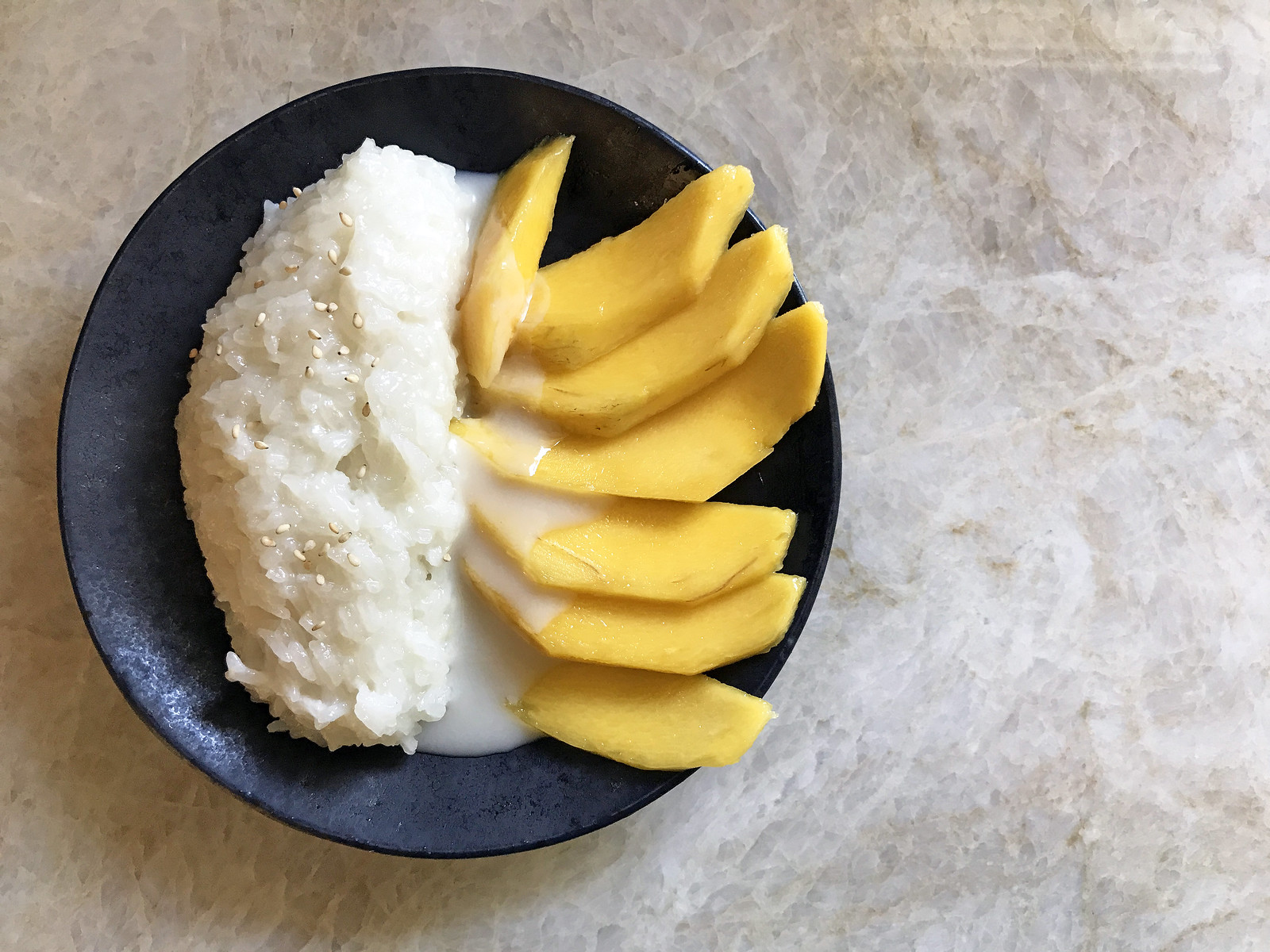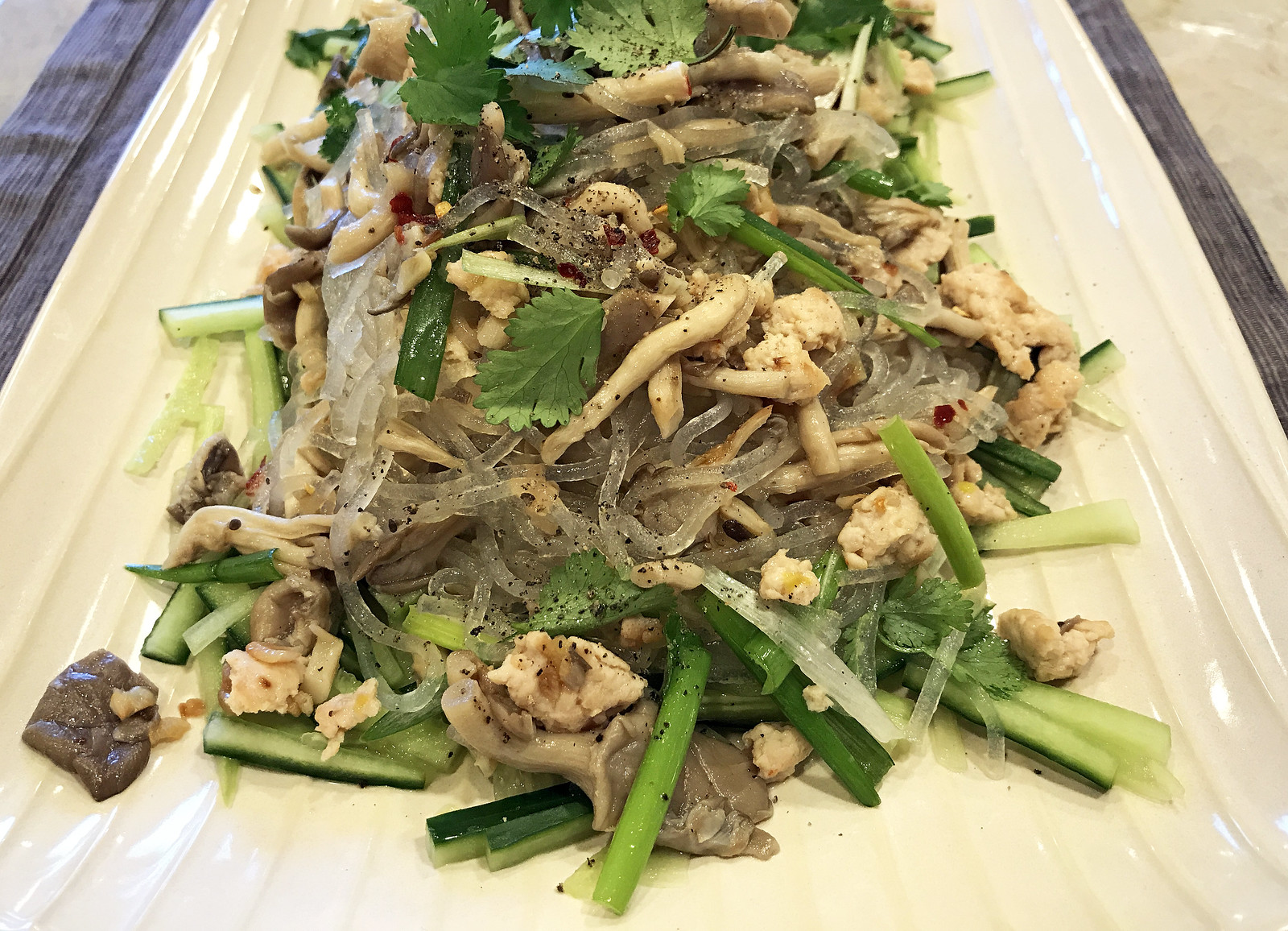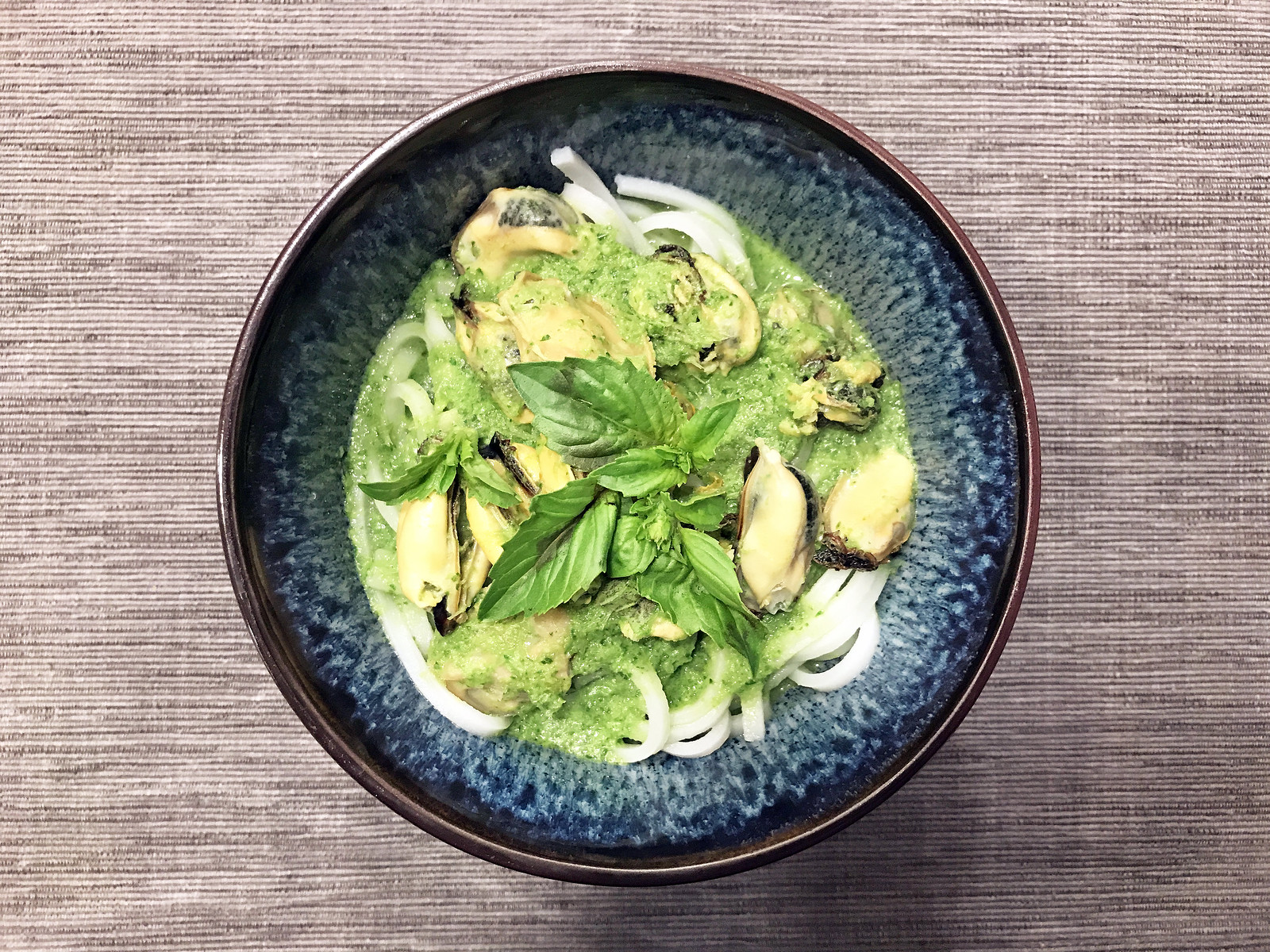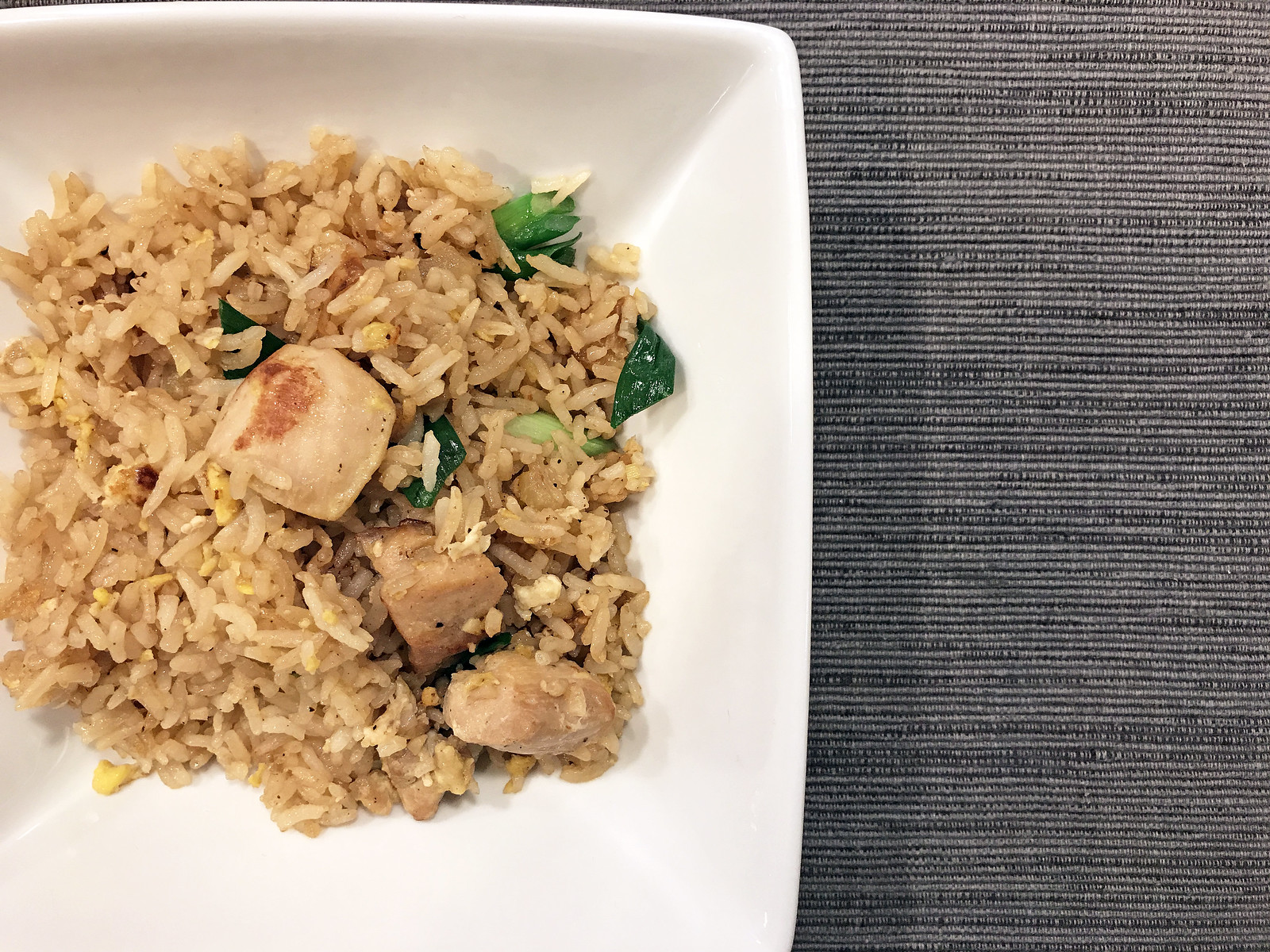Confession time: I ate a lot of mango sticky rice in Thailand a couple of years ago. I mean, a lot. We’d check out a new restaurant in Bangkok or a little hole-in-the-wall in Chiang Mai and you’d think I’d want to try out something new, something different. I mean, we steered savory in general: simmered tofu in fermented soybeans, grilled fish with chili-lime dipping sauce, curried crab — but we always returned to mango sticky rice. I know it isn’t a revelation, but man oh man is it refreshing. There’s nothing on earth like a fragrant Thai mango in season. It’s like custardy perfume, in the best way imaginable.
Back in my kitchen at home, I’ve learned to recreate my favorite Thai snack, and it couldn’t be easier. The only caveat is that mangoes in the U.S. are a distant cry from anything I ever tasted in Thailand. Bay Areans: where is your favorite place to source mangoes? Drop me a line.

Ingredients:
1 14-ounce can coconut milk
1/2 cup sugar
1/2 tablespoon salt
4 cups warm cooked sticky rice
2 mangoes, peeled and sliced lengthwise
1. In a small saucepan, bring the coconut milk, sugar, and salt to a boil. Reduce the heat and simmer for 10 minutes, stirring occasionally. Remove from heat and let cool slightly.
2. In a large bowl, pour 3/4 of the warm coconut mixture over the warm rice and stir with a large spoon until incorporated. Allow to sit for 10 minutes before serving, then plate alongside sliced mangoes. Drizzle with the remaining 1/4 of the coconut mixture and serve.




